
Backless is the sixth solo studio album by Eric Clapton, released in November 1978. Produced by Glyn Johns, and released by RSO Records, Backless reached no. 8 on the pop charts. While the single "Promises" only reached no. 37 on the UK Singles Chart, it was a much bigger success in the US, reaching no. 9 on the Billboard Hot 100. The follow-up single, "Watch Out for Lucy", was the B-side of "Promises", but reached no. 40 on the Billboard 100 on its own merit. Later in 1980 "Tulsa Time" was #30 on the Billboard 100 with the 1977 song "Cocaine" as B-side. It was Clapton's last studio album to feature his longtime bassist Carl Radle, who died in 1980.

No Reason to Cry is the fourth solo studio album by Eric Clapton, released by RSO Records on 27 August 1976. The album was recorded in Malibu and Los Angeles between December 1975 to May 1976. The record went silver in the U.K.
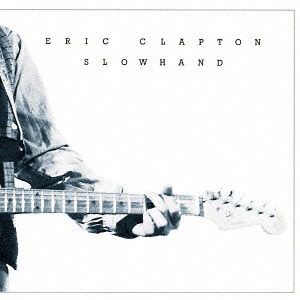
Slowhand is the fifth solo studio album by Eric Clapton. Released on 25 November 1977 by RSO Records, and titled after Clapton's nickname, it is one of his most commercially and critically successful studio albums. Slowhand produced the two hit singles "Lay Down Sally" and "Wonderful Tonight", reached various international music charts and was honoured with numerous awards and recording certifications. In 2012, a deluxe edition was released to celebrate the album's 35th anniversary.

Fresh Cream is the debut studio album by the British rock band Cream, consisting of bassist Jack Bruce, guitarist Eric Clapton and drummer Ginger Baker. The album was released in the UK on 9 December 1966, as the first LP on the Reaction Records label, owned by producer Robert Stigwood. It was released in both mono and stereo versions, at the same time as the release of the single "I Feel Free". The album peaked at No. 6 on the UK Albums Chart. The album was released in a slightly different form in January 1967 by Atco Records in the US, also in mono and stereo versions.

Robert Colin Stigwood was an Australian-born British-resident music entrepreneur, film producer and impresario, best known for managing Cream, Andy Gibb and the Bee Gees, theatrical productions like Hair and Jesus Christ Superstar, and film productions including the successful Grease and Saturday Night Fever. On his death, one obituary judged that he had been for a time the most powerful tycoon in the entertainment industry: "Stigwood owned the record label that issued his artists’ albums and film soundtracks, and he also controlled publishing rights – not since Hollywood's golden days had so much power and wealth been concentrated in the hands of one mogul."
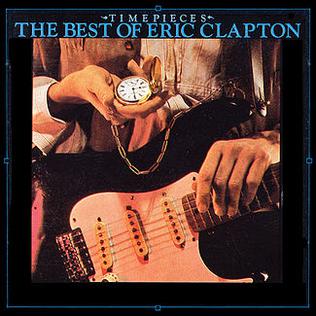
Timepieces: The Best of Eric Clapton is a greatest hits album by British musician Eric Clapton. The album was originally released by RSO/Polydor Records in April 1982. The following year a second volume, Time Pieces Vol.II Live in the Seventies, was released by the label. The album has been reissued several times and has been awarded certifications in several regions. Billboard reported the album sold more than 13,400,000 copies worldwide.

Seven is the seventh studio album by American rock singer-songwriter Bob Seger, released in 1974.

Carl Dean Radle was an American bassist who toured and recorded with many of the most influential recording artists of the late 1960s and 1970s. He was posthumously inducted to the Oklahoma Music Hall of Fame in 2006.

Eric Clapton is the debut solo studio album by English rock musician Eric Clapton, released in August 1970 by Atco and Polydor Records.
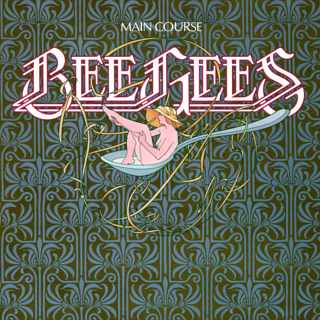
Main Course is the thirteenth studio album by the Bee Gees, released in 1975 by RSO Records. It was the group's last album to be released by Atlantic Records in the US under its distribution deal with Robert Stigwood. This album marked a great change for the Bee Gees as it was their first album to include mostly R&B, soul and funk-influenced songs, and created the model for their output through the rest of the 1970s. It rejuvenated the group's career and public image, particularly in the US, after the commercial disappointment of their preceding albums. Main Course was the first album to feature keyboardist Blue Weaver who had just left the Strawbs and toured with Mott the Hoople. The album cover with the band's new logo designed by US artist Drew Struzan made its first appearance here.

Naturally is the debut studio album by J. J. Cale released on October 25, 1971.
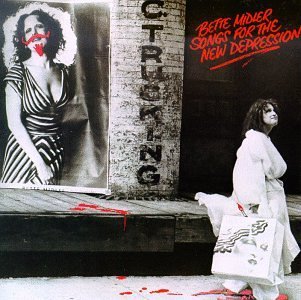
Songs for the New Depression is the third studio album by the American singer Bette Midler, released in early 1976 on the Atlantic Records label. The album was released on CD for the first time in 1990. A remastered version of the album was released by Atlantic Records/Warner Music in 1995. A limited edition remastered version of the album was released by Friday Music in 2014.
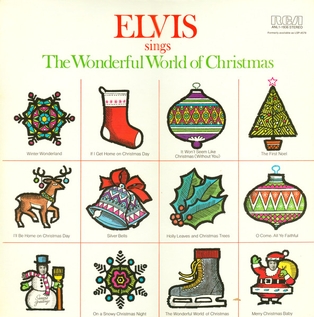
Elvis Sings The Wonderful World of Christmas is the fifteenth studio album by American singer Elvis Presley, released in October 1971. It was his first Christmas album with new recordings since Elvis' Christmas Album (1957). The album's single, "Merry Christmas Baby" / "O Come All Ye Faithful", was later released in November 1971. This album was a top seller and topped the Christmas LP's chart; it would have charted high on the Billboard Top LPs chart, but from 1963 to 1973, holiday albums were not allowed to chart. Though lacking the commercial appeal of Elvis' first Christmas album, it gradually become a perennial favorite. The album was certified Gold on November 4, 1977, Platinum on December 1, 1977, 2× Platinum on May 20, 1988, and 3× Platinum on July 15, 1999, by the RIAA.
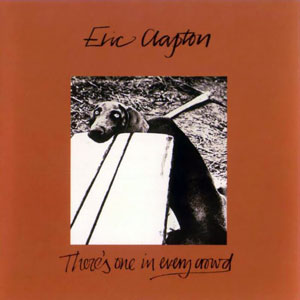
There's One in Every Crowd is the third solo studio album by Eric Clapton. Recorded shortly after 461 Ocean Boulevard, the album features a style similar to its predecessor but did not enjoy similar commercial success.
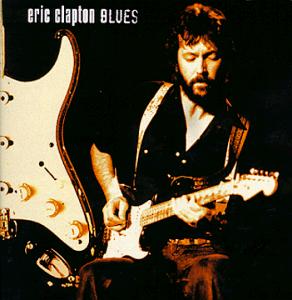
Blues is a blues rock compilation album by Eric Clapton released in 1999. The release features songs from Clapton's 1970s RSO albums, as well as some unreleased material from the same era. The second disc features live recordings.
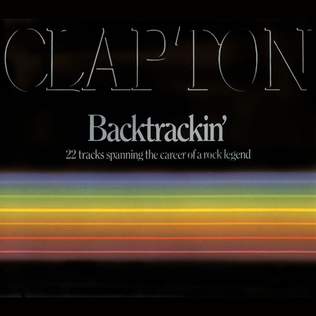
Backtrackin' is a two-disc compilation album by Eric Clapton spanning the years 1966 to 1980. It was released in 1984. The compilation contains all of Clapton's best known songs with Cream, Blind Faith, Derek and the Dominos, and his solo 1970s work through his 1980 live album Just One Night. This compilation album is made in Germany and is only available in the United States as an import. It was originally released by Starblend Records, and has since been reissued by Polydor Records. This 2 CD compilation is currently out of print in some markets while still available in some form in others.
"Give Me Strength" is a blues pop song, written and recorded by the British rock musician Eric Clapton for his 1974 hit studio album 461 Ocean Boulevard under RSO Records. However, the song gained more popularity, when the record company released the song as the B-side to Clapton's number-one single "I Shot the Sheriff", before the studio effort was released. It was released as a seven-inch gramophone record.
"Tell the Truth" is a song by the English–American band Derek and the Dominos, released in 1970 as the eighth track on their album Layla and Other Assorted Love Songs. The song was composed primarily by keyboardist Bobby Whitlock, with guitarist Eric Clapton adding the last verse. The band recorded the track at Criteria Studios in Miami, Florida in August 1970, with Tom Dowd as their producer.
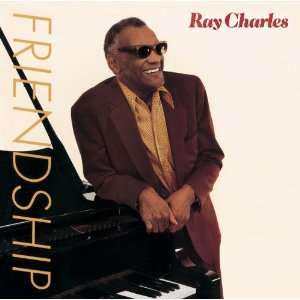
Friendship is a studio album by American singer and pianist Ray Charles. It was produced by Billy Sherrill and released in August 1984 by Columbia Records and Epic Records. The album peaked at number 1 on the Billboard Top Country Albums chart.

"Willie and the Hand Jive" is a song written by Johnny Otis and originally released as a single in 1958 by Otis, reaching #9 on the Billboard Hot 100 chart and #5 on the Billboard R&B chart. The song has a Bo Diddley beat and was partly inspired by the music sung by a chain gang Otis heard while he was touring. The lyrics are about a man who became famous for doing a dance with his hands, but the song has been accused of glorifying masturbation, though Otis always denied it. It has since been covered by numerous artists, including The Crickets, The Strangeloves, Eric Clapton, Cliff Richard, Kim Carnes, George Thorogood, The Bunch, and in live performances by The Grateful Dead. Clapton's 1974 version was released as a single and reached the Billboard Hot 100, peaking at No. 26. Thorogood's 1985 version reached No. 25 on the Billboard Rock Tracks chart.


















